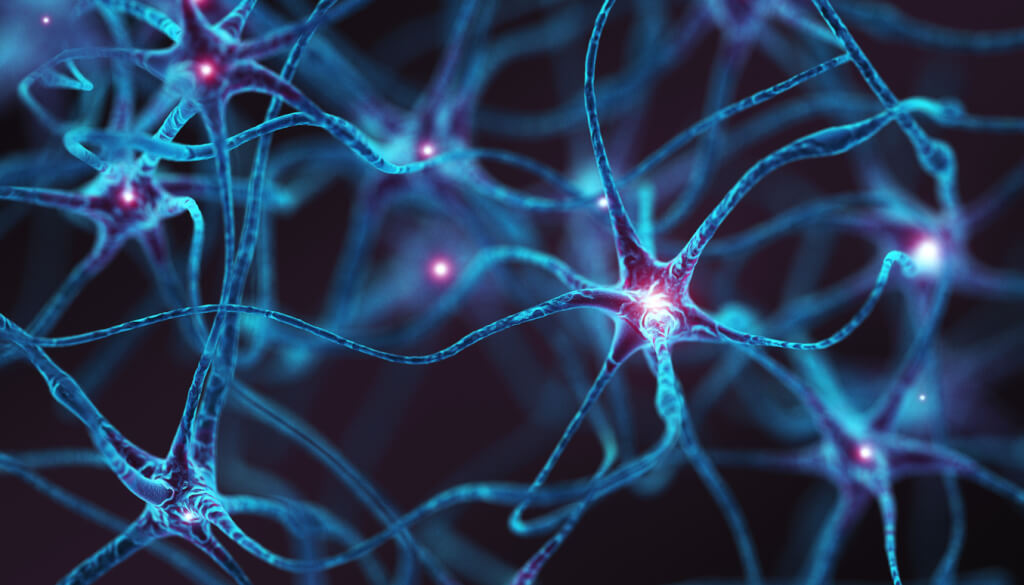Scientists have found a link between cancer and emotions: how our thoughts affect tumors
The connection between the brain and tumors is surrounded by myths and misconceptions. But this does not mean that such a connection cannot exist at all. Recently, scientists for the first time seriously addressed this issue. What conclusions did they come to? Meduza.

Photo: IStock
The influence of "bad thoughts" on the occurrence of cancer is one of the most terrible forms of pseudoscience. However, it has been proven that everything in the body is connected to everything. So this idea cannot be completely wrong. It is confirmed by the data of modern neuroscience - brain activity can indeed contribute to the development and growth of certain tumors, and those, in turn, cause the activation of certain brain functions. This two-way connection has only now been revealed, when precise methods of excitation and examination of individual nerve cells have become available. These data drive out any charlatanism and open the way for new methods of cancer treatment.
Experiment with special mice
Two years ago, neuroscientists at Stanford conducted an unusual experiment. They borrowed special mice from their colleague David Gutmann at the University of Washington. In these animals, one gene has been edited in such a way that at about the age of nine weeks, tumors form in the optic nerve in rodents. Tumors occur on a schedule, and such mice serve as a working model of cancer, glioma.
Stanford decided to test what would happen to tumors if the activity of the optic nerve was artificially influenced. Scientists artificially activated brain cells by irradiating with special light. During the experiment, they directed a thin beam of light directly into the nerve and waited. Soon, the mice developed larger tumors, and there were more of them than usual. This was unusual, because the formation of a tumor from the activity of the optic nerve, it seems, should not have depended. But something quite amazing happened to other groups of animals.
On the subject: Scientists resurrect animals that were frozen for 46 years in Siberia
The mice, at nine weeks old, were placed in the dark: for almost two months they lived under a very dim red light, and their tumors grew weak and sparse. When another group of mice was sent to live in a dark room earlier, at the sixth week, tumors did not appear in these animals at all. Even if the rodents then returned to the normal day-night cycle, they no longer had cancer - although they should have. Darkness canceled their "genetic schedule".
These rodents were not ordinary ones - they were specially created using genetic engineering to test drugs and study the development of cancer.
In other words, it is written in their DNA that tumors will predictably appear at a given time in a given place.
However, their genetic predisposition, the program, did not work without daylight. From this, scientists concluded that the development of at least this type of tumor is somehow connected with nervous activity, with the activity of the optic nerve. If the nerve does not receive signals from the eyes, then tumors do not appear, and when the nerve is stimulated, then there are more tumors.
neuroscience of cancer
For Michel Monge, this discovery did not come as a surprise. Monge leads the neuroscience group at Stanford and came up with the experiment described above as part of a study of an idea that could revolutionize our understanding of cancer and its treatment. She discovered that many brain tumors do not exist autonomously, but develop with the support of nerve cells, neurons, communicating with them. Thanks to Monge and her research, a whole science arose - the neuroscience of cancer. Monge is her main star.
Monge is a pediatric neurologist, and it was this circumstance that influenced the emergence of the neuroscience of cancer. Back in the 2010s, Monge noticed that in children, depending on age, brain tumors appear in certain places. For example, glioma of the optic tract most often develops at 4 years of age, and glioma in the brain stem at 6 years of age. Tumors in the thalamus usually appear closer to the age of 10, and in the cerebral hemispheres - by 14. It does not always work this way, but the trend was visible. That is, knowing the age of the patient, it is possible to predict the location of the tumor.
This became a clue for Monge. She began to look for something that could explain this relationship between age and place, suspecting that it was in the process of developing the child's brain.
The scientist suggested that there is a connection with the waves of myelination, that is, the coating of myelin protein on the long processes of neurons. Myelin creates an insulating sheath over the nerve wires, which makes them travel faster. Myelination takes years of childhood, but follows a schedule, and different areas of the brain are covered at different times. First, those that are associated with perception and movement, and only then those that are necessary for thinking.
Myelin in the brain is controlled by specialized cells called oligodendrocytes. Monge confirmed in studies that any wave of myelination, wherever it passes, is accompanied by an increased number of progenitor cells of oligodendrocytes (OPCs), and malignant gliomas can be born from OPCs. It appears that childhood brain cancer is linked to the way the brain develops from infancy to adolescence. This led Monge to a bold thought: what if nerve cells can directly influence the progression of cancer?
Like the article? Support ForumDaily!?
She found a connection between how the nervous system works and how cancer works. In 2014, her group showed that neurons can, by increasing their activity, cause OPC to appear and thus provide themselves with additional myelin. And a year later, an article was published where Monge and colleagues even managed to establish exactly how this happens - it turned out that neurons stimulate the growth of glioma using a protein that usually regulates the growth of glial cells, neuroligin-3.
Nerves and tumors exchange signals
Until recently, the role of the nervous system in the development of cancer was ignored. Nervous tissue was considered only a target, an object of defeat, and its fate was sealed: to die under the onslaught of a tumor.
The rise of cancer neuroscience coincided with the rise of optogenetics, a technique that uses a thin beam of light to turn individual neurons on and off in the living brain.
The main inventor of optogenetics, psychiatrist and neuroengineer Karl Deisseroth, works at Stanford, as does Monge, who often uses this method in research. True, Carl and Michel, besides science, are connected by something else. They have five children. The couple is happily married.
The human nervous system regulates all functions and processes in the body. This affects both their preparation and execution. Every day, the nervous system receives sensory stimulation transmitted by neurons. Nerve cells transmit electrical impulses, thereby collecting information from all over the body. Monge's radical idea is that exactly the same mechanisms govern the development of cancer.
Nerve networks envelop organs, grow into tissues (this is called innervation) - and thanks to this, the brain can speed up the heartbeat or learn about a splinter in the little finger.
Cancer cells induce capillaries to grow towards and around the tumor to supply oxygen and nutrients. In exactly the same way, the nerves grow into the tumor tissue, innervate it and help to develop. If the nerve is cut, tumors survive worse.
In 2019, the Stanford group made an unexpected discovery: it turned out that cancer cells do not just interact with nerve cells, they exchange signals with them in exactly the same way as neurons themselves do - through synaptic contacts.
Cancer activates the brain in its favor
This greatly changes the understanding of cancer.
It seems to become part of the brain physiologically, anatomically and even functionally. The cells of the deadliest cancers are embedded in the neural networks and communicate with them in a way that they understand: electrochemical.
Receiving short impulses from neurons, cancer cells transmit slower, up to two seconds, electrical signals to each other. They conduct them through gap junctions, that is, the entire tumor is a connected network of cells organized into a single electrically active tissue. And this tissue is integrated into the larger neural network of the brain.
Monge sometimes gives an example where a culture of cancer cells looks like a culture of neurons: bursts of electrical activity run through it. She says that the slow currents of gliomas (brain tumors) remind her of what happens during the initial development of the brain, when the precursor cells of neurons similarly change the voltage of their membranes. This helps them to survive and develop, although it is not entirely clear how.
You may be interested in: top New York news, stories of our immigrants, and helpful tips about life in the Big Apple - read all this on ForumDaily New York.
Gliomas, however, are not just electrically active. They love rhythm.
Oncologists at the German Cancer Research Center (DKFZ) have discovered that diffuse tumors in the brain are dependent on rhythm cells, much like special cells in the heart. Networks of tumor cells contain nodes, small groups of "pacemaker" cells, in which the level of calcium ions periodically pulses, distributing a signal throughout the network that supports tumor growth.
It seems that this is part of the answer to the question of why glioma needs to contact the nerves at all. For her life and increase, she needs their impulse activity, and the more the better. Tumors seem to be connected through an outlet to an energy source. Moreover, they do not passively consume this energy, but make the cells give out more impulses, thereby overexciting them. In scientific terms, gliomas remodel the synapses of neurons to make the brain hyperactive. The magazine Neuron reflected this idea on the cover in the form of a metaphor: the glioma is depicted as a rider driving a horse, and the horse itself symbolizes a neural network.
The activity of the nerve cells helps the tumors to grow, which, in turn, causes the neurons to fire more often and stronger in various ways. Hyperactivity of the brain is a direct road to epilepsy. Patients with malignant glioma often suffer from seizures, which can begin years before the tumor is seen on brain scans.
Contact with the nervous system allows cancer to influence even human thought processes.
Researchers at the University of California, San Francisco have shown this in patients with glioblastoma. When the subjects solved speech tasks, they additionally turned on those areas of the brain that are usually not involved in such tasks in healthy people. As the authors of an article in Nature put it, the tumor caused a functional remodeling of language circuits in the brain.
Treat cancer as a neurological disease
All these facts support the idea that cancer is the very "flaw", which is a continuation of the virtues. It seems that the biological way the nervous system develops generates aggressive forms of cancer. Even in the embryo, when there are no neurons yet, but only stem cells that will become them, patterned waves of electrical activity regulate the maturation of neural circuits, then the migration of cells and the growth of processes. Nervous tissue seems to grow itself, organizing itself through electrical activity, like an orchestra following a single melody, involving different musicians in it.
Without the influence of the nervous system, tissues and organs do not develop; nerve signals regulate their growth and regeneration. Cancer uses this mechanism by pretending to be tissue. It releases special molecules and attracts blood vessels and nerves with them. It needs blood for life, and signals from neurons for growth.
Close links between cancer and nerve cells have been found not only in the brain, but also throughout the body: in tumors of the prostate, stomach, colon, breast, and skin. Monge believes that tumor growth is very similar to the normal development of the organ. She uses the formula "oncology recapitulates ontogeny" - "oncology repeats ontogeny." To summarize this information, cancer is a systemic neurological disease.
Such a finding could lead to new forms of treatment. For example, drugs already used by neurologists for epilepsy can be used to reduce the activity of nerve pathways. Everything that affects neurotransmitter receptors, ion channels and is used in psychiatry can be redirected to other targets - new neural pathways.
A successful way to deprive the tumor of contact with the nerves, to denervate it, could be a breakthrough. Or turn off for a while the sensory channel that feeds it with signals - arrange "darkness" of the nerve fibers, just as Monger's group turned off the light to mice and thus saved them from cancer. This opens up a huge new field for research.
Mind as a risk factor
The activity of the human brain is almost inextricably linked with his thoughts and feelings. As Nature writes, “Mental conditions can have a profound effect on how badly we get sick and how well we recover.” If thoughts and feelings are reflected in neural activity, then the question arises: can they, through this activity, contribute to the development of cancer - for example, as a consequence of psychosocial stress?
There is no definite answer yet. Some studies find dependence, others do not. Interestingly, animal studies prove this connection, and clinical trials are ambiguous. The presence of stress in humans is much more difficult to assess than in rats in the lab.
Stress triggers the body's fight-flight response, which is a useful mechanism for avoiding a predator. But if the stress is chronic, then it kills health without bringing any benefit. When stressed, sympathetic nerves release the hormones epinephrine and norepinephrine, and many cells, including cancer cells, are dotted with β-adrenergic receptors to which these hormones bind. Such receptor activation is likely to trigger tumor growth.
Unlike animals, we don't even need negative experiences to start feeling stressed. We worry about things that haven't happened yet and might not even happen. As early as the XNUMXth century, Michel de Montaigne noted this trait: "My life was full of terrible misfortunes, most of which never happened." At the level of physiology, such experiences lead to chronic overexcitation of the nervous system. And the increased activity of nerve cells, as it turns out, can push the development of tumors.
Treatment in this case should not only attack the tumors, but also regulate the activity of the nerves.
Mind as part of the solution
How to use this dependence of nerve activity and cancer cells for good?
The idea is that the emotional state and physical activity can affect the brain and nerves not only in a bad way. Lifestyle and the state of the psyche can be another factor in both the development of tumors and their cure: drugs will have a greater effect if the psyche and behavior of a person do not kindle pathological foci of excitation in the brain.
In the spring of 2023, The New York Times published a column with the provocative headline: "Can a neuroscientist fight cancer with thoughts alone?" It was written by David J. Linden, professor of neurology at Johns Hopkins University School of Medicine, who has a terminal sarcoma. He underwent surgery, but the tumor was not completely removed - it partially grew into the heart.
Linden writes about how acquaintances advise him of various practices such as meditation and breathing techniques. As a scientist, he dismisses the "flows of energy" talk that goes along with it as nonsense, but admits that these practices could alleviate the course of the disease, provided that they affect the state of the nervous system.
“In my opinion, tumor innervation and its role in cancer progression is an interesting hypothesis. If behavioral interventions can attenuate or reverse the progression of some cancers (and of course that's a big if), they may do so by altering the electrical activity of the nerve cells that innervate the tumors, he says. “There is a huge “if” here, and it would be irresponsible to rely on practices alone. But if cancer is largely a nervous disease, then in addition to treatment, work at the mental level naturally suggests itself. It is a matter of finding the right states of mind and body. The chain of influence in this case looks like this: psyche - brain - nerves - tumor. And it is still poorly studied.”
The neuroscience of cancer not only complicates the picture, it claims to change lenses. The development of cancer as a way to study nervous activity in order to successfully cope with diseases.
In April 2023, Monge was awarded the Richard Lounsbury Prize, which is awarded in recognition of outstanding scientific achievements in the fields of biology and medicine. “Monger’s pioneering work has fundamentally changed our understanding of communication between neurons and glial cells during normal brain function and in neurological diseases, in particular brain cancer,” the award’s website says.
Monge and her husband are called by some "the Marie and Pierre Curie of the neurosciences". The intrigue may lie in which of them will receive the Nobel Prize first. Michelle herself, having stepped on the stage, admitted that her main projects in the field of developmental neuroscience are her children.
Read also on ForumDaily:
In Colorado, the bear came to the wedding and made himself a feast at the table with desserts
Eight stereotypes about Russians in the USA
2 helicopters collided while extinguishing a fire in California: 3 people died
Subscribe to ForumDaily on Google NewsDo you want more important and interesting news about life in the USA and immigration to America? — support us donate! Also subscribe to our page Facebook. Select the “Priority in display” option and read us first. Also, don't forget to subscribe to our РєР ° РЅР ° Р »РІ Telegram and Instagram- there is a lot of interesting things there. And join thousands of readers ForumDaily New York — there you will find a lot of interesting and positive information about life in the metropolis.











